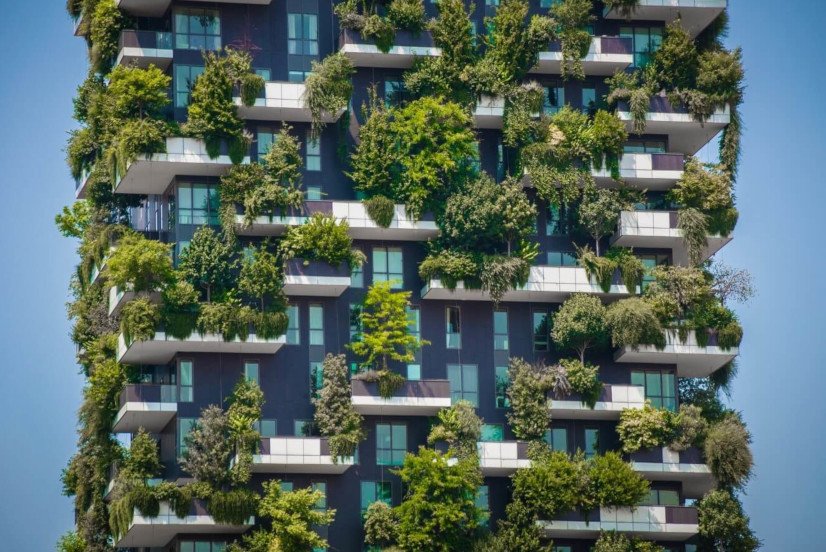Sustainable Architecture: How Green Buildings Will Shape City Skylines in the Next Decade

As urban populations continue to grow, the demand for sustainable solutions in architecture has never been more pressing. In the next decade, the rise of green buildings will fundamentally alter city skylines, transforming them into more energy-efficient, eco-friendly, and livable spaces. Sustainable architecture is not just a trend, but a necessity in the fight against climate change and resource depletion. Here’s how green buildings will reshape our cities by 2035:
1. Zero-Carbon Buildings
By 2035, the most advanced urban centers will feature buildings designed to produce as much (or more) energy than they consume. Zero-carbon buildings are equipped with renewable energy sources, such as solar panels and wind turbines, integrated into their structure. These buildings will utilize cutting-edge energy-efficient systems, including heat recovery ventilation, advanced insulation materials, and smart energy grids. The goal is to minimize carbon footprints and ensure that buildings contribute positively to the environment.
2. Vertical Gardens and Urban Agriculture
Urban areas will begin to incorporate more green spaces—especially in densely populated cities where land is scarce. Vertical gardens, rooftop farms, and living walls will become a common feature in green buildings. These structures not only reduce the urban heat island effect (which makes cities significantly warmer than surrounding areas) but also provide a sustainable source of local food. Imagine an office tower that doubles as a vertical farm, where employees can grow their own food on the roof or in specialized indoor gardens.
3. Smart, Resource-Efficient Design
Green buildings will harness technology to reduce resource consumption. The integration of smart sensors and Internet of Things (IoT) devices will allow buildings to monitor and optimize their use of water, energy, and other resources in real time. Lighting, temperature, and ventilation systems will adjust based on occupancy and environmental conditions, ensuring that no energy or water is wasted. This dynamic, responsive design will help achieve energy savings and reduce operational costs for building owners and tenants alike.
4. Sustainable Materials
The construction industry is shifting towards materials that have a lower environmental impact. By 2035, we will see a massive rise in the use of sustainable building materials such as recycled steel, low-carbon concrete, and reclaimed wood. Additionally, advances in biodegradable and non-toxic materials will make their way into interior design and finishes, ensuring that the impact on human health is minimized as well.
5. Green Roofs and Solar-Powered Facades
One of the most noticeable features of future city skylines will be the widespread use of green roofs and solar-powered facades. These structures will not only serve as aesthetically pleasing elements but will also contribute to the energy efficiency of buildings. Green roofs will provide insulation, reduce stormwater runoff, and improve air quality, while solar panels integrated into building exteriors will harness the sun’s power to generate electricity and heat.
6. Water Conservation and Recycling
Water scarcity is a growing concern, and buildings of the future will play an essential role in reducing waste and conserving water. Rainwater harvesting systems, greywater recycling (for use in irrigation and toilets), and water-efficient appliances will be standard in green buildings. By integrating these systems, cities can reduce the demand on municipal water supplies while ensuring that resources are used responsibly.
7. Sustainable Mobility and Electric Vehicle Integration
Green buildings will support sustainable transportation options as part of their holistic design. Electric vehicle (EV) charging stations, bike-sharing facilities, and proximity to public transit will be built into the infrastructure of these buildings. In the future, it will be common to see office complexes, residential towers, and commercial buildings that seamlessly integrate EV infrastructure and encourage people to use greener modes of transport.
8. Biophilic Design for Health and Wellbeing
Incorporating natural elements into building design—known as biophilic design—will become a key component of future green architecture. More natural light, fresh air, indoor plants, and outdoor spaces will be incorporated into building layouts to improve the physical and mental well-being of occupants. Research has shown that biophilic design boosts productivity, reduces stress, and enhances overall happiness. Green buildings will prioritize occupant health as much as environmental sustainability.
9. Reimagining Public Spaces
Sustainable architecture won’t just focus on private buildings but will extend to public spaces, too. Parks, plazas, and streetscapes will be reimagined with green infrastructure that promotes environmental stewardship. Green streets, with permeable pavements that allow rainwater to flow naturally into the ground, will be a common sight, reducing the risk of urban flooding and enhancing the city’s ecosystem.
10. Circular Economy in Construction
By 2035, the architecture and construction industry will fully embrace the principles of the circular economy. Green buildings will be designed with the entire lifecycle in mind, from sustainable sourcing and production to reuse and recycling. Components of old buildings will be reused in new constructions, and materials will be chosen for their recyclability at the end of a building’s life. This approach will drastically reduce waste and environmental impact while creating a more sustainable industry.
Conclusion
By 2035, green buildings will redefine urban life. From energy-efficient skyscrapers to sustainable public spaces, cities will become more ecologically balanced, resilient, and livable. As technology continues to evolve and environmental consciousness rises, green architecture will be at the forefront of our response to climate change. The city of the future will not only look different but will function in harmony with the planet, ensuring a healthier, more sustainable world for generations to come.